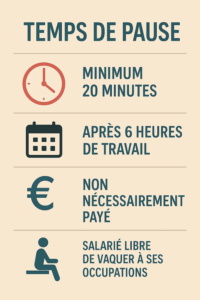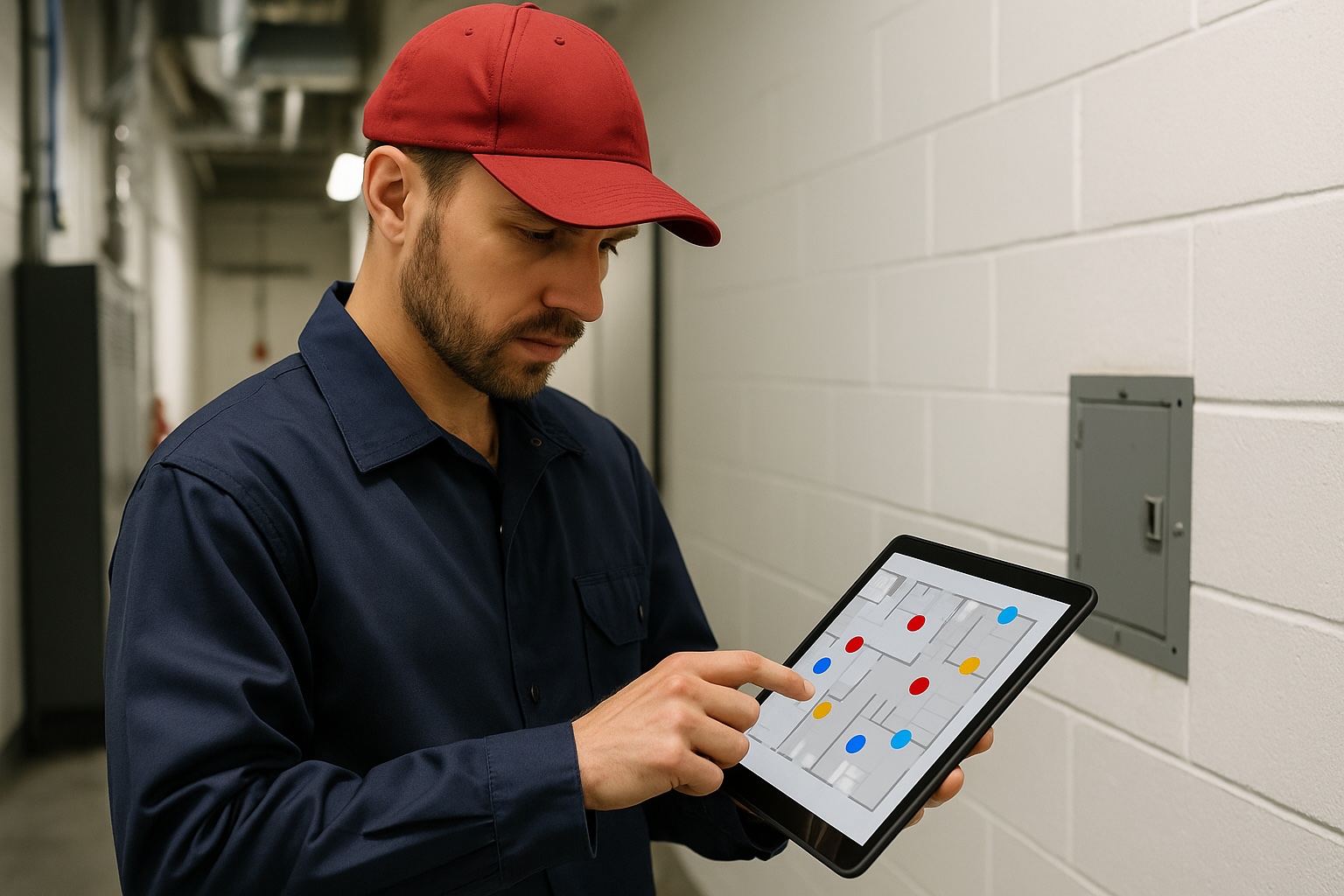Break Time in the Field: What the Law Really Says
Break time, that small space between two tasks, is often misunderstood, sometimes ignored, and yet strictly regulated by law. Here’s finally a clear explanation.
Why talk about “break time regulations”?
Breaks evoke relaxation, coffee, and a brief escape from the day’s tasks. But beyond the image, it’s also a precise legal topic.
In companies, especially in field service roles, a poor understanding can quickly become a source of tension or dispute.
Break time regulations formally define employees’ rights—and employers’ obligations. Ignoring these rules is playing with fire. And no one wants their schedule to go up in smoke.
What the Labor Code Says
According to Article L3121-16 of the French Labor Code, every employee is entitled to a minimum consecutive break of 20 minutes as soon as the daily working time reaches 6 hours.
And no, it’s not “about” 20 minutes, nor “if there’s time.” That’s the rule.
But that’s not all:
- This break time is not necessarily paid, unless otherwise agreed or customary in the company.
- It can only be split if specific provisions allow it (collective agreement, company agreement, etc.).
- The employee must be able to truly rest during this period (no break during a customer call or while traveling between two sites).
Break Time, On-Call Time, and Actual Working Time: Who’s Who?
Confusion is common. An on-call employee, for example, is available without necessarily working. This does not always count as actual working time.
Conversely, actual working time is the period during which the employee is at the employer’s disposal, following their instructions, without being free to attend to personal matters.
And what about lunch breaks? It’s a debated topic:
- If the employee remains available during this break (on-call, waiting instructions), it may be counted as working time.
- Otherwise, it remains an unpaid break.
In practice, everything depends on the organization in place. And that’s where trouble often starts for some companies…
Why Comply with Break Time Regulations in the Field?
One could say “because it’s the law,” and stop there. But that would ignore some very real consequences:
- Financial penalties in the event of a labor inspection.
- Growing dissatisfaction among employees who feel squeezed dry.
- Psychosocial risks related to overload and failure to respect recovery times.
- Damaged reputation with clients and partners.
In short: a company that neglects breaks has everything to lose. There’s nothing poetic about administrative irregularities.
Gray Areas: Waiting, Travel, Downtime
A technician finishes a job at 11:30 a.m. The next one is scheduled for 1:15 p.m. Is this waiting time a break? Working time? A gray area?
Many companies consider these moments as breaks—thus unpaid.
From the employee’s perspective, it’s quite different: they remain on call, often restricted in their movements, without real freedom.
Hence legitimate frustrations… and avoidable conflicts if the issue is addressed in advance.
Formalizing Breaks: Mission Impossible?
Not necessarily. Some management software like Cadulis allow you to:
- Automatically reserve time slots dedicated to breaks (lunch, recovery, etc.).
- Configure fixed rules with controlled flexibility (extended time slots, 10-minute tolerance, etc.).
- Ensure fairness in team management while remaining compliant with the Labor Code.
A well-configured tool then becomes an **ally for regulatory compliance**. And not just another Excel sheet to fill out at the end of the day, half asleep in front of your computer.

Clear Rules… But Human Flexibility
Yes, a framework must be set. Yes, regulations must be respected. But all this should be based on an ingredient often forgotten in HR guides: trust.
You can’t monitor every break, every cigarette, every call to daycare. And it’s not desirable. What field teams want is to be treated with respect.
They know how to do the right thing if they are clearly informed of the rules.
What Companies Should Remember About Break Time Regulations
- Clearly inform your employees about their break rights.
- Configure your schedules to include breaks without making the day heavier.
- Use appropriate tools like Cadulis to ensure rules are reliable and maintain fairness.
- Keep a dose of common sense: people can’t be scheduled down to the last centimeter.
📌 In summary:
Break time is not a favor: it’s a right. If poorly implemented, it generates tension, frustration, and sometimes penalties.
When properly integrated, it becomes a lever for performance… and mutual respect. So why not do things right?







